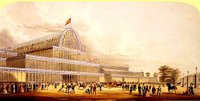ALEXANDER BULLER TURNER
Second Lieutenant, 3rd Battalion (attached 1st Battalion) Princess Charlotte of Wales's (Royal Berkshire) Regiment
Born: 22 May 1893, Reading, Berkshire
Died: 1 October 1915, Chocques, France

Citation: For most conspicuous bravery on 28th September, 1915, at "Fosse 8," near Vermelles.
When the regimental bombers could make no headway in Slag Alley, Second Lieutenant Turner volunteered to lead a second bombing attack. He pressed down the communication trench practically alone, throwing bombs incessantly with such dash and determination that he drove back the Germans about 150 yards without a check. His action enabled the reserves to advance with very little loss, and subsequently covered the flank of his regiment in its retirement, thus probably averting a loss of some hundreds of men.
This most gallant Officer has since died of wounds received in this action.
(London Gazette Issue 29371 dated 18 Nov 1915, published 16 Nov 1915.)VICTOR BULLER TURNER
Major (temporary Lieutenant-Colonel), The Rifle Brigade (Prince Consort's Own)
Born: 17 January 1900, Thatcham, Newbury, Berkshire
Died: 7 August 1972, Ditchingham, Suffolk

Citation: For most conspicuous gallantry and devotion to duty on the 27th October, 1942, in the Western Desert.
Lieutenant-Colonel Turner led a Battalion of the Rifle Brigade at night for 4,000 yards through difficult country to their objective, where 40 German prisoners were captured. He then organised the captured position for all-round defence; in this position he and his Battalion were continuously attacked from 5.30 a.m. to 7 p.m., unsupported and so isolated that replenishment of ammunition was impossible owing to the concentration and accuracy of the enemy fire.
During this time the Battalion was attacked by not less than 90 German tanks which advanced in successive waves. All of these were repulsed with a loss to the enemy of 35 tanks which were in flames, and not less than 20 more which had been immobilised.
Throughout the action Lieutenant-Colonel Turner never ceased to go to each part of the front as it was threatened. Wherever the fire was heaviest, there he was to be found. In one case, finding a solitary six-pounder gun in action (the others being casualties) and manned only by another officer and a Sergeant, he acted as loader and with these two destroyed 5 enemy tanks. While doing this he was wounded in the head, but he refused all aid until the last tank was destroyed.
His personal gallantry and complete disregard of danger as he moved about encouraging his Battalion to resist to the last, resulted in the infliction of a severe defeat on the enemy tanks. He set an example of leadership and bravery which inspired his whole Battalion and which will remain an inspiration to the Brigade.
(London Gazette Issue 35790 dated 20 Nov 1942, published 17 Nov 1942.)Note: One of four sets of brothers who were awarded the Victoria Cross. According to several sources, both brothers bear the name Buller due to a family connection with General Sir Redvers Buller VC GCB GCMG, though I have not been able to find out what that connection might be.
 Citation: This officer with five men was holding the right of a position at Vlakfontein on the 3rd July, 1901, during an attack by the Boers. Two of his men were killed and two wounded, but the position was still held, largely owing to Lieutenant English’s personal pluck. When the ammunition ran short he went over to the next party and obtained more; to do this he had to cross some 15 yards of open ground under a heavy fire at a range of from 20 to 30 yards.
Citation: This officer with five men was holding the right of a position at Vlakfontein on the 3rd July, 1901, during an attack by the Boers. Two of his men were killed and two wounded, but the position was still held, largely owing to Lieutenant English’s personal pluck. When the ammunition ran short he went over to the next party and obtained more; to do this he had to cross some 15 yards of open ground under a heavy fire at a range of from 20 to 30 yards.














































